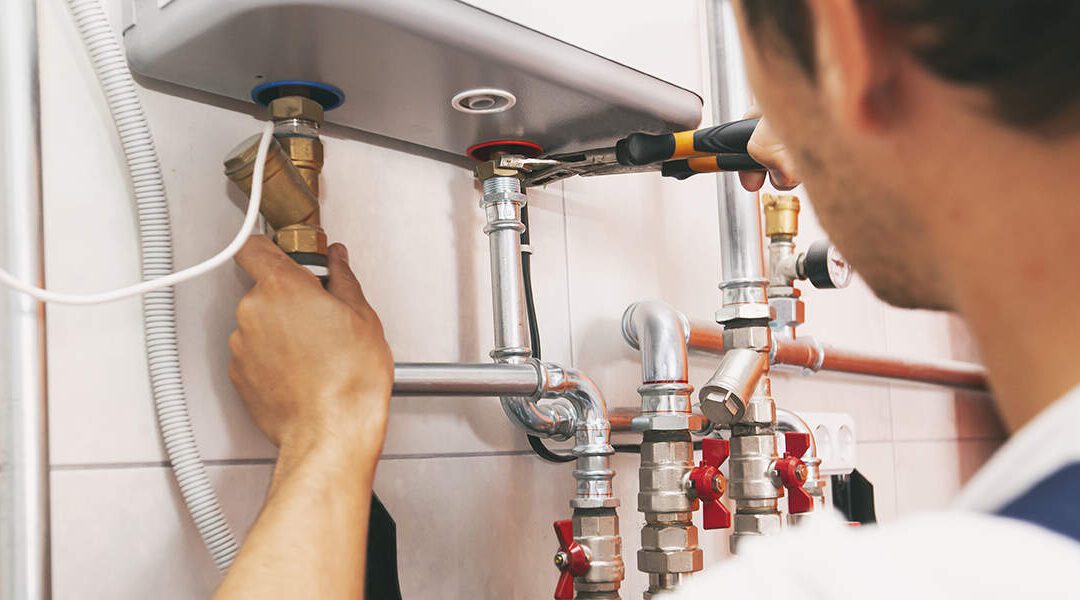Learn how to optimize your furnace and its heat output to stay warm each winter with help from SM Mechanical Services in Glastonbury. Call today!
Having a central boiler in your Connecticut home should mean steady, consistent heat. Unfortunately, many factors can influence a heating system’s efficiency, leaving you to ask, “What temperature should my boiler be set at in winter?”
SM Mechanical Services is a top HVAC contractor in Glastonbury, CT, so we have experience fixing and maintaining all types of boilers, furnaces, and heat pumps. See what we have to say about winter temperature settings for boilers in our guide below.
Common Types of Boilers in Glastonbury Houses
Setting the right temperature on your home’s boiler requires more than having a personal preference. Still, it helps to understand your type of boiler to determine its ideal winter temperature.
Standard Boilers
A typical boiler only provides heat for a house. It contains a boiler, a hot water cylinder, and a cold water tank, the latter of which is usually in an attic since it uses gravity to fill the boiler.
These boilers are ideal for large properties because their separate water tanks take up a lot of space. They work by heating the water that the cold water tank feeds the boiler. The heated water then goes through the radiators in each room in your home before settling in the hot water tank.
System Boilers
Like a standard boiler, a system boiler can heat water and send it through radiators to warm rooms before the hot water settles in a hot water cylinder. However, this type of boiler doesn’t require a separate cold water tank since it gets water directly from the main water supply.
If you have a spacious home with a high demand for hot water, you might have a system boiler. System boilers are more compact than the standard variety, though they still take up a considerable amount of space.
Combi Boilers
A combi or combination boiler is a popular option for homes with boilers because it provides the property with centralized heating and hot water. The appliance takes cold water from the house’s main water supply and then heats it by combusting fuel like oil or natural gas. With the help of a heat exchanger, the warmth from the combustion process transfers from the combustion chamber to the water tank.
Despite providing heat and hot water for the building, a combi boiler can’t provide both at the same time. If someone turns on a hot water tap while the boiler is heating the house, the equipment will temporarily redirect the heat to the water supply.
Ideal Temperature Settings for Centralized Boilers
The short answer to “What temperature should my boiler be set at in winter?” is whatever you prefer. Still, keep in mind that external factors like outdoor temperatures will impact how hot you want your boiler, so you must adjust it accordingly to maximize your comfort, hot water supply, and equipment’s longevity.
Ideally, you should set your boiler temperatures around 180 to 200 degrees in the winter to heat water effectively. For warmth, the temperature should be no higher than 200 degrees. If temperatures exceed 212, the boiler will overheat and cause considerable damage to the equipment.
For most households, the hot water cylinder will be around the same temperature range throughout the year, which should be between 140 and 150 degrees. Setting the temperature lower than that increases the risk of your boiler becoming a breeding ground for the Legionella bacteria that cause Legionnaire’s disease.
Legionnaire’s disease is a type of lung infection. People develop the condition by inhaling or swallowing water droplets containing Legionella. The bacteria grows in freshwater systems, including hot water tanks.
According to the Centers for Disease Control and Prevention, a boiler’s hot water cylinder temperature should never fall below 124 degrees. Despite the answer to “What temperature should my boiler be set at in winter?” being more about your preferences than an exact temperature, you must maintain the minimum temperature requirements for your boiler’s hot water cylinder for health purposes.
How To Optimize Your Boiler’s Energy Consumption
Now that you have an idea about what your boiler’s ideal temperature should be in the winter, how can you optimize your system to heat your home efficiently without consuming too much energy? The answer is to install a programmable thermostat.
Your thermostat is the control hub for your HVAC system. Installing a programmable thermostat for different zones in your house gives you more control over the temperature and comfort of each room. For example, you could install a thermostat for your bedrooms so that you can decrease the boiler’s temperature by a few degrees at night to make the rooms more suitable for sleeping.
Modern programmable thermostats also come with remote functions, which means you can adjust your boiler’s temperature without touching the actual thermostat. Instead, you can use a mobile device like a smartphone or tablet to adjust the thermostat’s settings according to your preferences, outdoor temperatures, and the number of people inside your home.
It might seem counterproductive to regularly adjust your thermostat to conserve energy while using your heating system, but it isn’t. By decreasing the temperature on the thermostat by a few degrees at night or when no one is home, you’re actually saving energy. Your boiler won’t have to run constantly to maintain temperatures you can’t enjoy if you’re not home, and you’ll sleep better in a chillier bedroom.
Let SM Mechanical Services Keep Your Boiler Running Smoothly
As a leading heating and cooling company serving Glastonbury, Connecticut, SM Mechanical Services has the expertise to answer questions like “What temperature should my boiler be set at in winter?”
With our years of experience and extensive training, we can handle everything from boiler installation and replacement to routine furnace repairs — call (860) 530-2671 today to request help with your heating unit from SM Mechanical Services.

